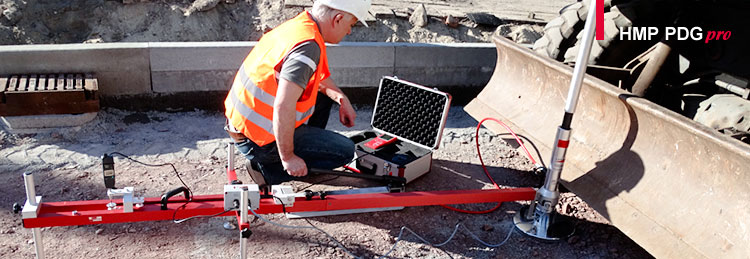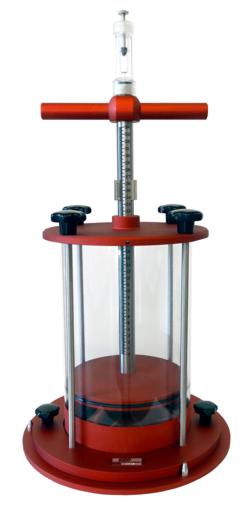Soil Densitometer, DIN 18125-2 for Determination of Soil Density
As usual, best HMP quality from our own certified production.
Robust Design:
- handy star handles for quick assembly
- sturdy stainless steel cylinder ring plate
- Nonius with mm scale
- vent valve made of acrylic glass, with measuring marks
- acrylic glass cylinder, transparent, dm 200mm, capacity10 l
- sealed surfaces for a long service life
Supplied ready for use with rubber balloon
2 years warrenty
Accessories (optional):
- Replacement rubber balloon, light colour with reinforced rim
- Replacement rubber balloon, red without reinforced rim
- Lubricant LEVAFORM, 500 ml
- Silicon grease LOCTITE 8104, 75 ml tube
Spare parts
- X - ring dm 177,17 mm x 5,33 mm
- Valve complete
- Acrylic glass cylinder
- Sealing ring valve
We will be happy to answer your questions about the product and price in person immediately.
You can reach us on 0391 2445390 or simply use our contact form and we will call you back.
<< Back to overview Tester for soil mechanics
Balloon Operation for Determination of Soil Density according to DIN 18125-2, Issue 2020-11
The method is used for non-cohesive and cohesive soils, in which you can excavate stable pits. The appliance is particularly recommended for small-grained subbases. Subbases with sharp-edged stones may cause damage to the surface of the balloon.
Instruction manual
The base plate is placed on a plane surface of the soil layer to be investigated and the soil within the ring is excavated up to a depth of not less than 50 mm. Loose ground is removed with a hand brush or any other brush. The balloon device filled with 6 l of water is placed on the base plate, whereby the piston plate is pulled up so far as to avoid the rubber balloon becoming trapped. By opening the valve (lifting the cone), you then allow the rubber balloon to rest on the ground surface under the weight of the water and push the piston down until the water in the hollow piston rod has risen to the area between the two measuring marks of the acrylic glass tube. The initial piston position L0 is then read off the nonius and the piston and rubber balloon are pulled up again.
After removing the balloon device from the aluminium ring plate, the ground below the hole in the base plate is then excavated to create a pit with walls as vertical as possible. This pit should have a depth of 20 cm.Then the balloon device is placed on the base plate again, Anschließend wird das Ballongerät wieder auf die Grundplatte gestellt, the rubber balloon is lowered by opening the valve and the piston is depressed as before. After reading the second piston position L1, the piston is pulled up and the balloon unit is placed on the transport plate.
Evaluation
The volume V of the soil hole is equal to the liquid volume, which was displaced by the piston between the two readings L0 and L1. This is calculated by multiplying the piston area A with the difference of the readings (L1-L0):
V= (L1-L0)*A
Therein mean:
L0 reading, which describes the position of the piston before excavation of the soil sample
L1 reading, which describes the the position of the piston with lowered balloon in the pit
A piston area (clear sectional area of the transparent plastic cylinder)
The piston area is calculated from the inner diameter of the cylinder d by using formula A=pi*d²/4.
Caused by production the inner diameter can vary in range of millimeter. Please use the dimension specified on the acrylic glass cylinder for calculation of piston area for your individually device.
Further Information:
The base plate can be used for transportation and temporary storage of the device in order to avoid pollutions of aluminium ring plate and balloon.
To reduce friction at the piston it is recommended to soften the water by adding a lubricant (e.g. Levaform) and grease the sealing ring of the piston with a lubricant (e.g. Loctite 8104). Mineral oils must not be used. If the device is not used for a lengthy period, it should be thoroughly cleaned and dried to prevent corrosion. To avoid scaling and corrosion on the device it is recommended using distilled water.
When pulling up the balloon, wrinkles at the clamping point has to be avoided. This can be done best by rolling up the edge of the balloon to one third. Use your palm to roll it outwards.
The vulcanised rubber balloon should be stored cool and dry and should be protected against any chemical and mechanical impact.
<< Back to overview Tester for soil mechanics




